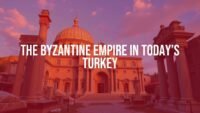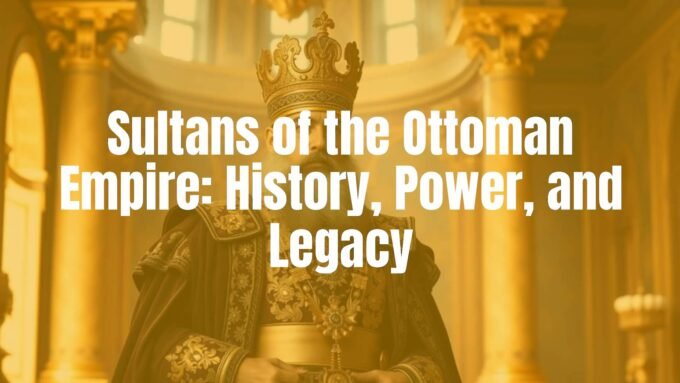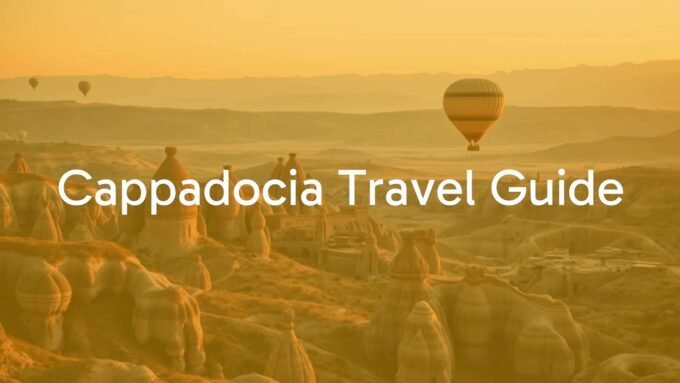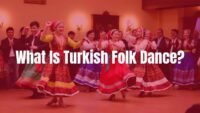Anatolia, also called Asia Minor, has been the birthplace and meeting ground of many ancient civilizations. Here, large empires rose and fell, leaving lasting marks on the history of people everywhere. Its history is not just a list of events, but a colorful blend of cultures, inventions, and struggles. From early humans to advanced societies, Anatolia has always been important-a pathway linking East and West and a thriving base for human growth and progress.
This article gives an easy overview of Anatolia’s ancient history by looking at its location, time periods, main cultures, important events, and the lasting culture it has today. We will walk through thousands of years, seeing how power shifted, how technology grew, and how many different people lived together to shape this interesting land.

Where Is Anatolia and What Makes Its Ancient History Unique?
Anatolia’s place on the world map is the main reason for its rich history. Sitting between Asia and Europe, it was the goal of many groups for thousands of years. People moved in, fought for control, and traded, which changed Anatolia’s identity again and again.
Geographical Borders of Anatolia
Anatolia is a large peninsula that covers most of modern Turkey. It is in western Asia, bordered by the Mediterranean Sea to the south, the Aegean Sea to the west, the Turkish Straits (the Bosporus and the Dardanelles) to the northwest, and the Black Sea to the north. The Sea of Marmara joins the Black Sea and the Aegean while also setting Anatolia apart from Europe’s Thrace area.
Its western and northern borders are set by the sea, but the eastern and southeastern borders have had different definitions over time. Usually, it’s said to reach east from the Gulf of Alexandretta up to the Black Sea, and includes the Anatolian Plateau. The eastern border touches the Armenian Highlands and the Euphrates River, while to the southeast, mountains divide it from Syria’s Orontes valley and the Mesopotamian plain. This mix of mountains, plateaus, and coastlines means Anatolia has many climates-from cold plateaus in the center to warm, coastal weather around the edges. This has allowed many animals and plants to thrive.
“Anatolia” Through the Ages
The word “Anatolia” comes from the Greek “Anatolḗ,” meaning “the East” or “sunrise.” At first, it likely referred to Greek cities along the Aegean coast before growing to mean a much bigger area.
| Historical Name | Meaning/Origin | Used By |
|---|---|---|
| Anatolia | From Greek “sunrise” | Greeks, Romans, modern Turkey |
| Asia Minor (Mikrà Asía) | “Little Asia” | Later Greeks |
| Rōmanía | Land of the Romans | Seljuk Turks |
| Turchia | Land of the Turks | Europeans (from 12th century) |
By the 11th-12th centuries, with the coming of the Seljuk Turks and then the forming of the modern state of Turkey in 1923, Anatolia continued its role as a central region connecting different worlds.
A Timeline of Anatolia’s Ancient Past
Anatolia’s history covers many ages, each with its own changes. From early people to the time of the Byzantines, it has always been a busy center of human activity.
Prehistoric Anatolia
- Evidence of people living here starts about 1.2 million years ago-a stone tool was found in the Gediz River Valley.
- The Paleolithic era (20,000-15,000 BCE) shows people in caves like Yarımburgaz and Karain, making tools and art.
- The Neolithic period (15,000-4000 BCE): Farming developed here and spread into Europe. Sites like Çatalhöyük (from about 7,000 BCE), Hacılar, and especially Göbekli Tepe were larger and more advanced than most European villages of the time.
- By the Chalcolithic period, metal was being used instead of just stone, and pottery art spread widely.

The Bronze Age: Growth of Civilizations
- About 3000-1200 BCE, bronze tools and weapons became common, brought by the Kura-Araxes culture from the Caucasus.
- Organized trade with Mesopotamia for metals like copper and tin brought writing and wealth. Assyrian traders set up colonies for business.
- The Hattians first rose (about 2500-2000 BCE) in central Anatolia, then the Indo-European Hittites arrived (about 2000 BCE), bringing their language and chariot technology.
The Iron Age
- After the big collapse of Bronze Age kingdoms around 1180 BCE (possibly caused by the “Sea Peoples” and other problems), small kingdoms took over from the Hittites.
- Iron tools and weapons became widespread. New groups rose up, such as:
- Phrygians: Kingdom in the northwest (capital at Gordium)-famous king: Midas.
- Urartu: Kingdom in the east (Lake Van area).
- Lydians: Kingdom in the west, known for creating the first coins, with Sardis as their capital.

Classical and Persian Times
- By the 6th century BCE, the whole region was taken by the Persian Empire, which ruled through local governors (satraps).
- Greek cities on the west coast did not like Persian control and started the Ionian Revolt in 499 BCE, leading to famous Greek-Persian wars.
- At different times, western Anatolia shifted between local, Greek, and Persian rule, with both influences staying strong in the area.
Hellenistic Period: Alexander’s Arrival
- Alexander the Great invaded in 334 BCE, defeated the Persians at the Battle of Granicus, quickly took over Anatolia, and spread Greek culture far inland.
- After Alexander’s death in 323 BCE, his generals fought for control. Anatolia was divided among them: Ptolemy got the south, Lysimachus the west, and Seleucus the rest. Local kingdoms like Pontus and Pergamon also grew powerful.

Roman Era
- Pergamon was left to Rome in 133 BCE, creating the first province in Anatolia.
- Mithridates VI of Pontus led a huge rebellion in 88 BCE, killing many Romans and Italians. After the Mithridatic Wars (ending in 63 BCE), Rome controlled all of Anatolia.
- During Roman times, the region became prosperous, with roads, big cities, and later, Christian communities.
The Byzantine Period
- When the Roman Empire split, Anatolia became part of the eastern, or Byzantine, Empire. Constantine I moved the capital to Byzantium (later called Constantinople/Istanbul).
- Anatolia remained wealthy and an important trade hub.
- From the 11th century, attacks by Seljuk Turks, followed by Crusaders and Mongols, caused big changes-eventually, the area became majority Turkish and Muslim.
Major Peoples and Kingdoms in Ancient Anatolia
Anatolia’s past is filled with many different people and kingdoms. Some of the main groups include:
| Name | Era | Area | Main Facts |
|---|---|---|---|
| Hattians | Bronze Age | Central Anatolia | Early kingdom, skilled with metal, non-Indo-European |
| Hittites | Bronze Age | Central Anatolia | Conquered Hattians, large empire, used cuneiform |
| Phrygians | Iron Age | West/Northwest | King Midas, road builders, later destroyed by Cimmerians |
| Lydians | Iron Age | West | First to use coins, capital at Sardis, defeated by Persians |
| Urartians | Iron Age | East | Fortress builders around Lake Van |
| Greeks (Ionians, Dorians, Aeolians) | Late Bronze Age-Classical | Western Coast | Founded cities like Ephesus, Miletus; centers of art/science |
| Achaemenid Persians | Classical | Whole Anatolia | Ruled as governors, allowed some local customs |
| Galatians (Celts) | Hellenistic | Central Anatolia | Settled after migrating from Europe |
| Romans | Late Classical-Byzantine | All | Unified region, built cities and roads, brought Christianity |
Key Events that Changed Ancient Anatolia
- The Bronze Age Collapse (c. 1180 BCE): The Hittite Empire broke up, leading to small new states. Iron use spread, and new groups moved in.
- Persian Conquest (c. 546 BCE): Persians, after defeating Lydia’s king Croesus, ruled all of Anatolia through satrapies but often allowed older local leaders to stay in charge. The Ionian Greek revolt (499 BCE) led to the major Persian Wars.
- Alexander’s Campaigns (334-323 BCE): Alexander the Great swept through Anatolia, removing Persian rule and spreading Greek ways before his empire split among his generals.
- Roman Expansion and the Mithridatic Wars (88-63 BCE): After violent conflict, Rome became the main power. Roman roads, cities, and peace helped the region grow.
- Spread of Christianity (1st-4th centuries CE): Christianity grew quickly here. St. Paul wrote letters to local churches, and key Christian councils met in cities like Nicaea.
- Arab-Byzantine and Later Invasions (from 7th century CE): War with Arab empires led to the shrinking of Anatolia’s borders and shifts in the region’s population and religion. The rise of the Seljuks turned Anatolia into a Turkish and Islamic heartland, paving the way for the Ottomans.
Everyday Life, Culture, and Economy in Ancient Anatolia
Languages and Writing
- Different groups spoke many languages: early Hattic, later Hittite and Luwian (both Indo-European), Hurrian, and much later, Greek and Roman Latin. Phrygian and Galatian (Celtic) also appeared.
- Cuneiform writing came to Anatolia with Assyrian traders and the Hittites. Luwians also used their own hieroglyphs, and the Greek alphabet spread later.
Religious Beliefs
- Early religions focused on nature and many gods. The Hittites and other groups picked up and mixed beliefs from each other.
- Later, Greek religion and gods became popular along the west and south coasts. The Phrygians worshiped Cybele, a mother goddess.
- With Rome, eastern Christianity became strong. Later still, after the Seljuks, Islam took hold.
Trade and Daily Life
- Anatolia’s position made it a center for trade. Early trade with Mesopotamia brought writing and luxury goods. Later, Greek cities on the coast became rich from sea trade.
- Lydia invented coins, making trade easier for everyone. Under Rome, travel and business thrived because of well-built roads and order. Cities like Ephesus and Pergamon had theaters, libraries, and markets.

Anatolia’s Place in Ancient World Connections
- Anatolia was the main bridge between Asia and Europe for trade, farming methods, and new technology.
- The Hittite Empire signed agreements with Egypt and traded with the whole Near East.
- Greek philosophers and artists from Anatolia, such as those from Miletus, helped shape wider Greek and Western thinking.
- The region also became a route for Christian ideas spreading westward and later served as the base for many other cultures and faiths.
The Lasting Heritage of Anatolia’s Past
Famous Sites and UNESCO Recognition
- Hattusa: The old Hittite capital, known for its strong walls and ancient texts.
- Çatalhöyük: A very old farming village, showing early city life.
- Ephesus: A major Greek and then Roman city, now famous for its theater, library, and temples.
- Pergamon: Known for its acropolis and the Great Altar.
- Cappadocia: An area with rock houses and churches, once central to early Christianity.
Many of these places are protected as World Heritage Sites and still teach us about the people who lived long ago.
Impact on Modern Turkey
- Anatolia’s history is the foundation of the culture and identity of Turkey today.
- Many Turkish cities, like Ankara and Istanbul, have grown on the ruins of ancient cities.
- Artifacts and traditions from the Hittites, Byzantines, and others are preserved in museums and daily life.
- The name “Anadolu” is still used proudly as a reminder of this long history. Modern Turkish customs have grown from a mix of all these earlier cultures, showing how deeply connected Turkey is to its ancient past.














Leave a comment